Abstract
Female gametes of marine brown algae release and/or attract their conspecific males by chemical signals. The majority of these compounds are unsaturated, nonfunctionalized acyclic, and/or alicyclic C11 hydrocarbons. Threshold concentrations for release and attraction are generally observed in the range of 1-1000 pmol. The blends may contain various configurational isomers of the genuine pheromones as well as mixtures of enantiomers. Higher plants produce the C11 hydrocarbons from dodeca-3,6,9-trienoic acid; brown algae exploit the family of icosanoids for biosynthesis of the same compounds. The biosynthetic routes comprise several spontaneously occurring pericyclic reactions such as [3.3]-sigmatropic rearrangements, [1.7]-hydrogen shifts, and electrocyclic ring closures. All pheromones are (a)biotically degraded by ubiquitous oxidative pathways involving singlet oxygen or hydroxyl radicals, which may be produced through the agency of heavy metals, huminic acids, or light.
Full text
PDF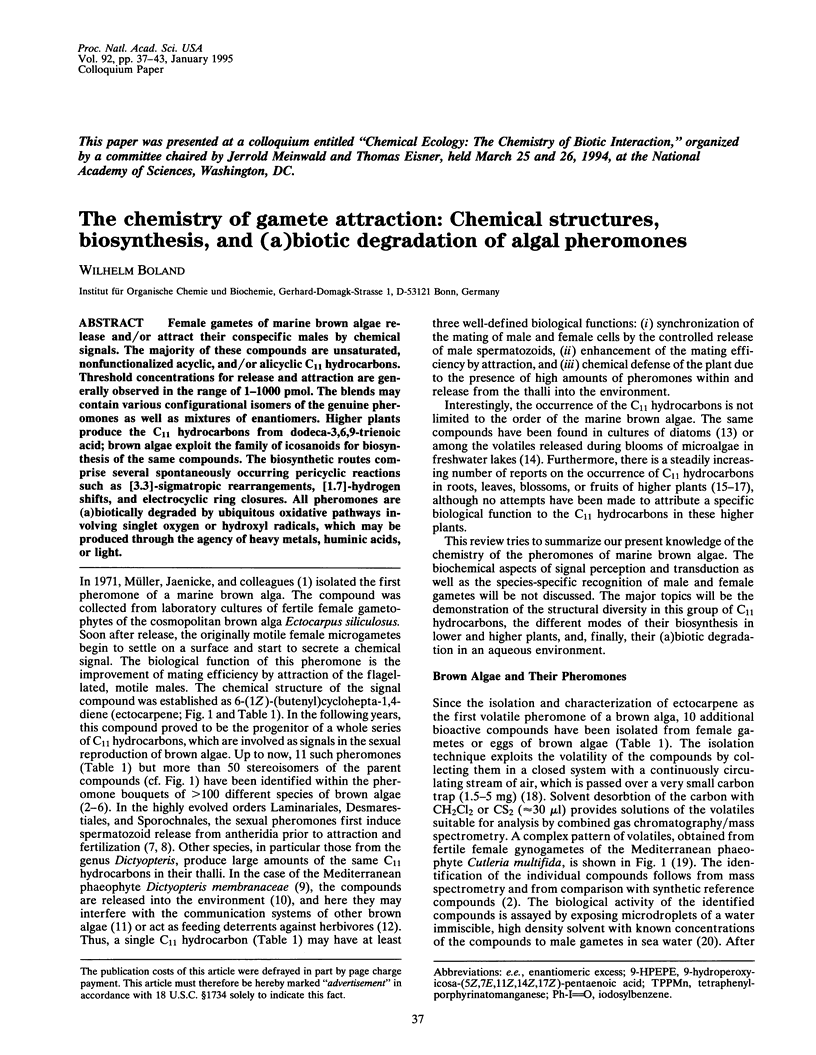
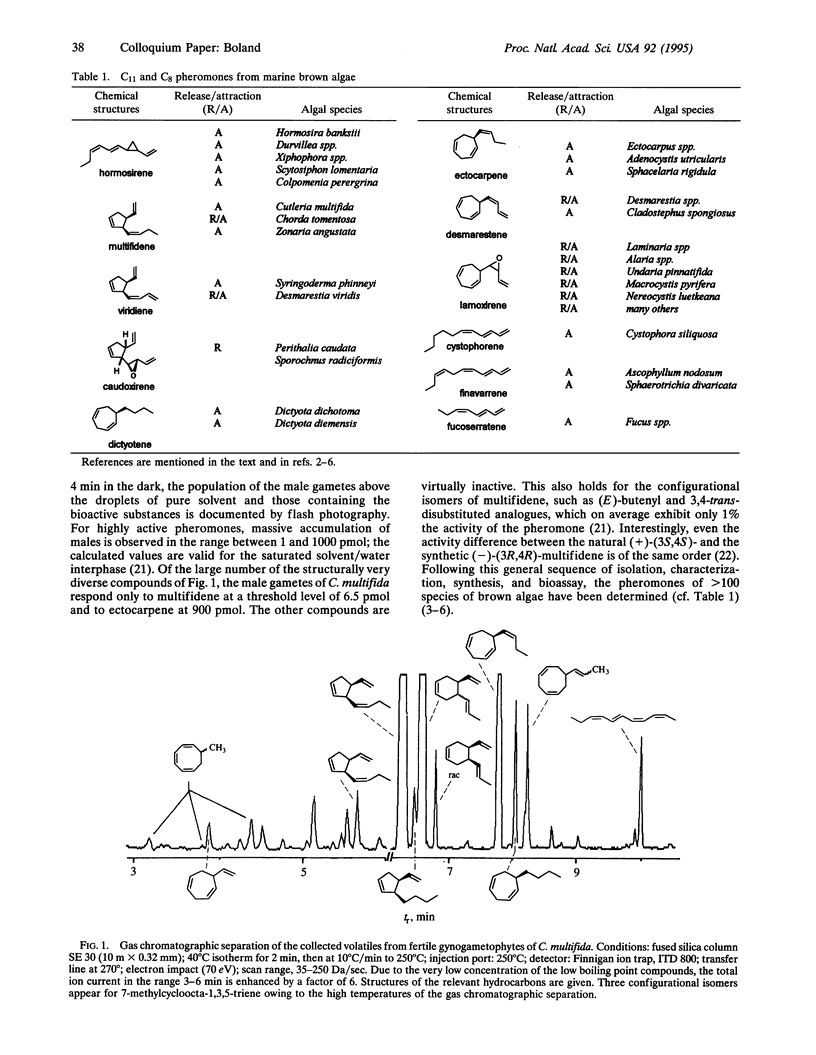
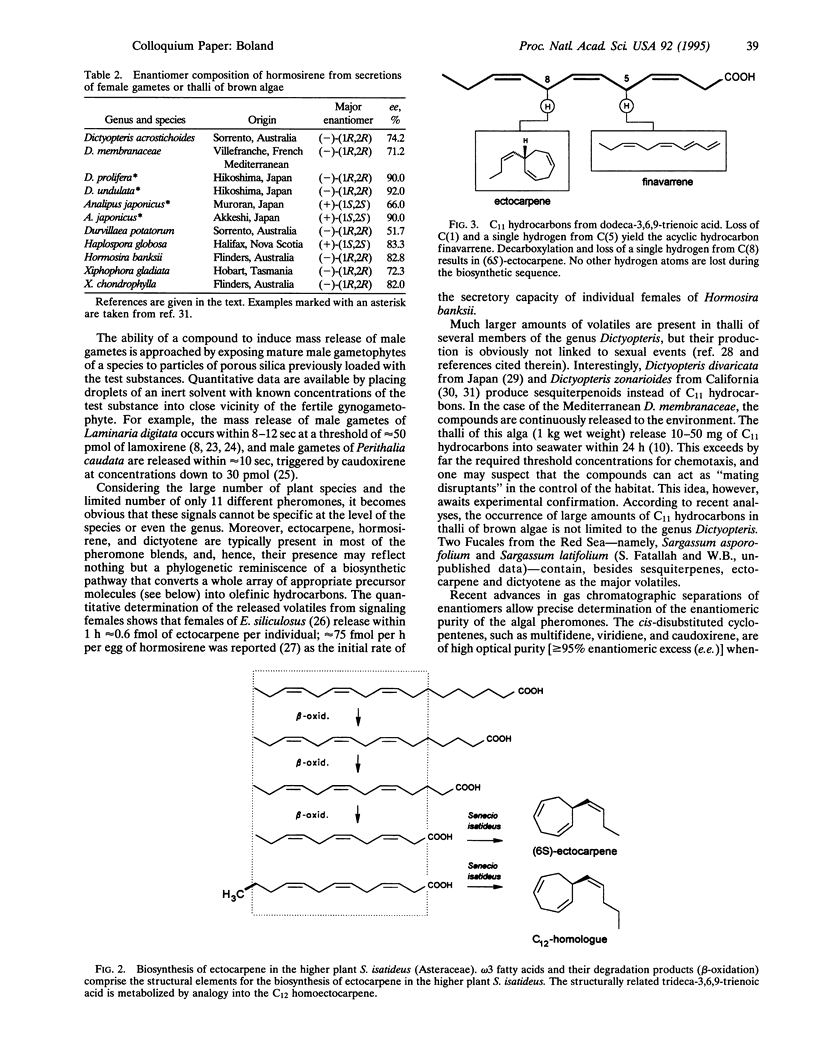
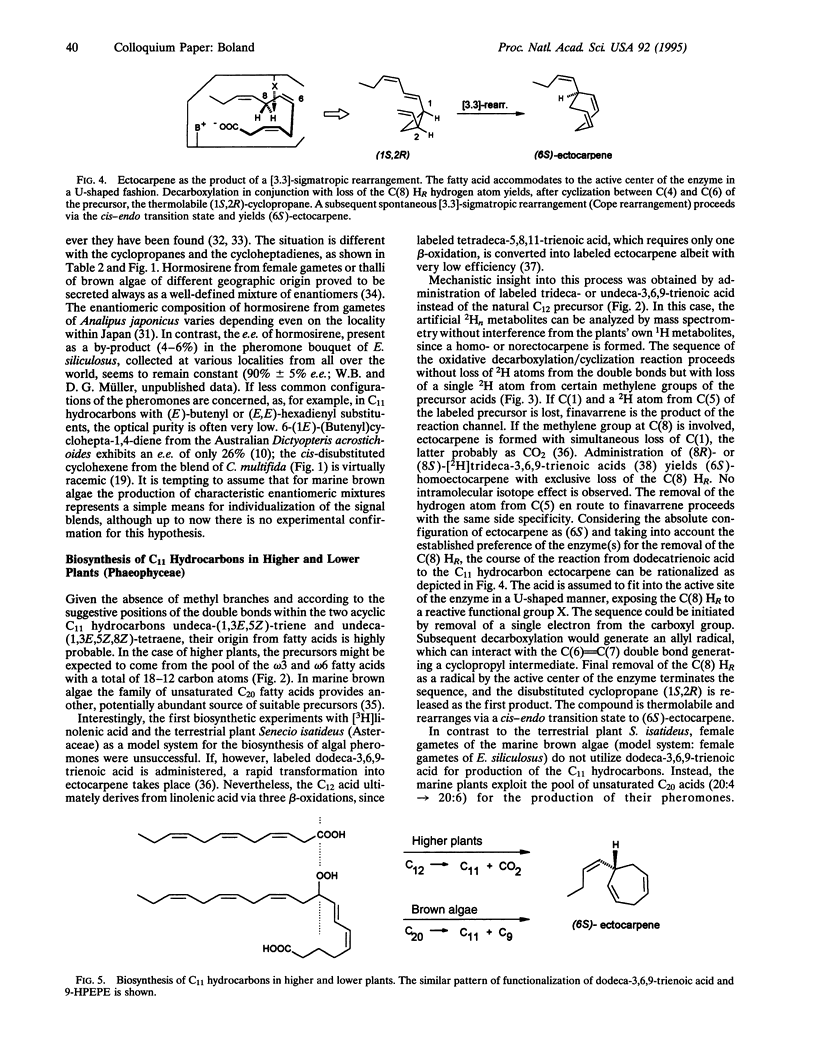
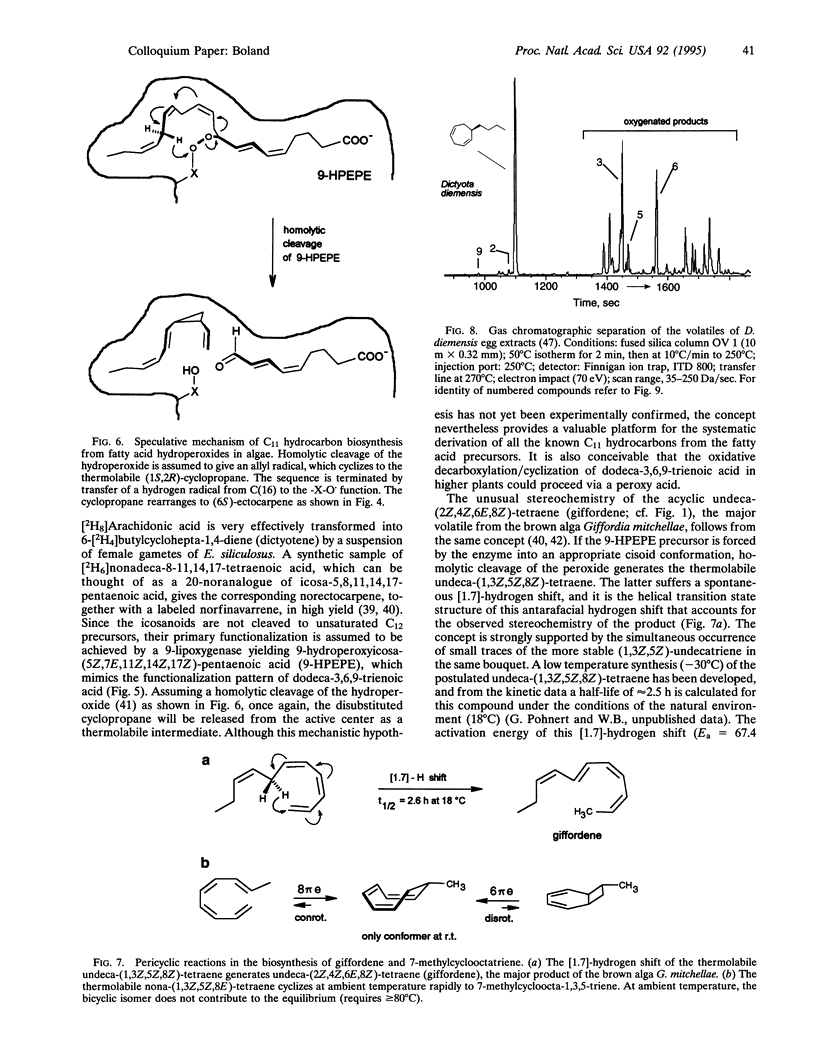
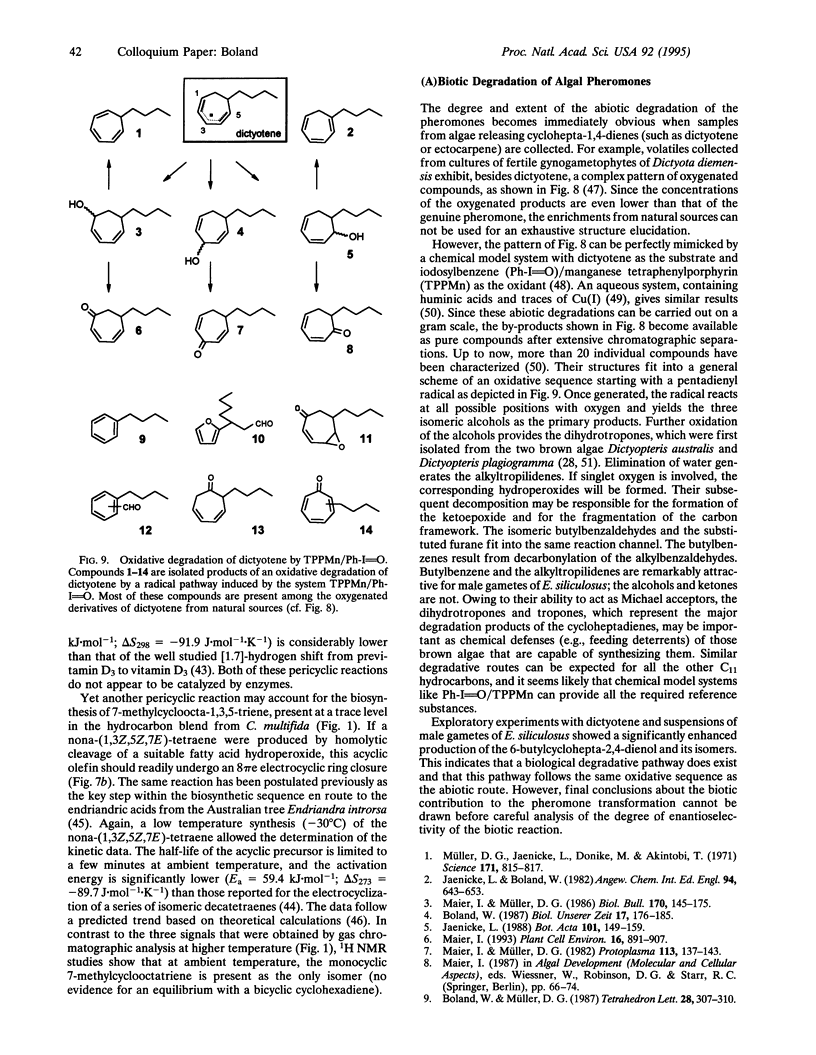
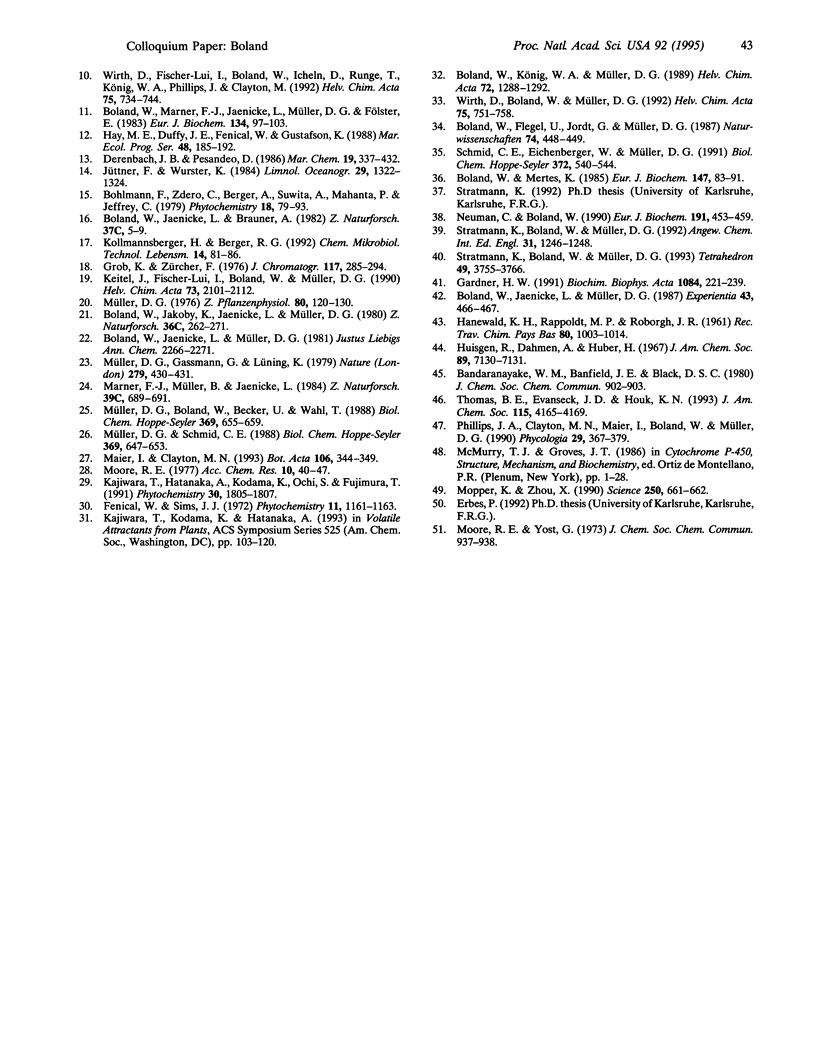
Selected References
These references are in PubMed. This may not be the complete list of references from this article.
- Boland W., Marner F. J., Jaenicke L., Müller D. G., Fölster E. Comparative receptor study in gamete chemotaxis of the seaweeds Ectocarpus siliculosus and Cutleria multifida. An approach to interspecific communication of algal gametes. Eur J Biochem. 1983 Jul 15;134(1):97–103. doi: 10.1111/j.1432-1033.1983.tb07536.x. [DOI] [PubMed] [Google Scholar]
- Boland W., Mertes K. Biosynthesis of algal pheromones. A model study with the composite Senecio isatideus. Eur J Biochem. 1985 Feb 15;147(1):83–91. doi: 10.1111/j.1432-1033.1985.tb08722.x. [DOI] [PubMed] [Google Scholar]
- Gardner H. W. Recent investigations into the lipoxygenase pathway of plants. Biochim Biophys Acta. 1991 Jul 30;1084(3):221–239. doi: 10.1016/0005-2760(91)90063-n. [DOI] [PubMed] [Google Scholar]
- Giannovario J. A., Grob R. L., Rulon P. W. Analysis of trace pollutants in the air by means of cryogenic gas chromatography. J Chromatogr. 1976 Jun 23;121(2):285–294. doi: 10.1016/s0021-9673(00)85025-6. [DOI] [PubMed] [Google Scholar]
- Hatanaka T., Oguchi M., Sugibayashi K., Morimoto Y. Influence of isosorbide dinitrate concentration on its skin permeability from adhesive matrix devices. Chem Pharm Bull (Tokyo) 1991 Jul;39(7):1802–1805. doi: 10.1248/cpb.39.1802. [DOI] [PubMed] [Google Scholar]
- Mopper K., Zhou X. Hydroxyl radical photoproduction in the sea and its potential impact on marine processes. Science. 1990 Nov 2;250(4981):661–664. doi: 10.1126/science.250.4981.661. [DOI] [PubMed] [Google Scholar]
- Müller D. G., Boland W., Becker U., Wahl T. Caudoxirene, the spermatozoid-releasing and attracting factor in the marine brown alga Perithalia caudata (Phaeophyceae, Sporochnales). Biol Chem Hoppe Seyler. 1988 Aug;369(8):655–659. doi: 10.1515/bchm3.1988.369.2.655. [DOI] [PubMed] [Google Scholar]
- Müller D. G., Gassmann G., Lüning K. Isolation of a spermatozoid-releasing and -attracting substance from female gametophytes of Laminaria digitata. Nature. 1979 May 31;279(5712):430–431. doi: 10.1038/279430a0. [DOI] [PubMed] [Google Scholar]
- Müller D. G., Jaenicke L., Donike M., Akintobi T. Sex attractant in a brown alga: chemical structure. Science. 1971 Feb 26;171(3973):815–817. doi: 10.1126/science.171.3973.815. [DOI] [PubMed] [Google Scholar]
- Müller D. G., Schmid C. E. Qualitative and quantitative determination of pheromone secretion in female gametes of Ectocarpus siliculosus (Phaeophyceae). Biol Chem Hoppe Seyler. 1988 Aug;369(8):647–653. doi: 10.1515/bchm3.1988.369.2.647. [DOI] [PubMed] [Google Scholar]
- Neumann C., Boland W. Stereochemical studies on algal pheromone biosynthesis. A model study with the flowering plant Senecio isatideus (Asteraceae). Eur J Biochem. 1990 Jul 31;191(2):453–459. doi: 10.1111/j.1432-1033.1990.tb19143.x. [DOI] [PubMed] [Google Scholar]


